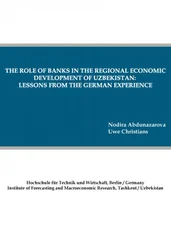However, in our opinion, this tendency is in many respects explained not by reduction of an employee’s workload in the condition of full employment but by increasing in the number of part-time employees, especially in the conditions of crisis years. The data at table 50 show the dynamics of part-time employment.
Table 50
The Number of Part-time Employees in the Economy in Several Industrially Developed Countries (Thousands of People)

The data of the International Labour Organization were used: http://ilo.org/ilostat
As in most industrially developed countries there is a five-day working week (with two weekends), so working day reduction can be indicative of working day reduction, to a certain extent. Full identification of these processes would be incorrect: for example, enactment of a 35-hour working week did not mean automatic reduction of hours of each working day in France. Only working time on Fridays, before weekends, often reduced under terms of a collective agreement.
Moreover, within formally working time advanced training of employees can take place, they can participate in management what is actually a form of realization of additional free time as the time released from production labour and the time for development of employees’ abilities. Such social activities are not typical for a usual working day yet.
Having supposed that working day duration is defined as the result of division of the working week value by the quantity of working days, we should state that in manufacturing industries of countries leading in innovative development a working day is not less than 7 hours, as a rule. In developed capitalist countries after 70-90 years since enactment of an 8-hour working day working day duration reduced by 10-15% at best. And, for example, in the USA an average working day in manufacturing industries has been fluctuating within 8.1-8.3 hours during last 20 years.
In its time saving of labour in the sphere of material production was used to decrease the period of employees’ labour activities in relation to average actual lifespan. It was the economic meaning of universal provision of pensions. W. Leontief noted rightly: “While the increase in productivity need not lead to involuntary idleness, it certainly does result in a steady reduction in the number of years and hours that an average American spends at making his living” [40].
Using the data of the above calculations of actual seniority duration in the FRG, we can approximately assess changing in duration of this most complex element of the system of labour activity periods. The generation, which went out the staff of economically active population in 1970, had about 120000 hours of their labour life, and the generation retired in 2012 had 70000 hours. Consequently, actual seniority reduced by more than 40%.
Thus, for industrially developed countries the following system of utilization of labour saving in the production sphere, achieved on the basis of increasing in its productivity, is typical today.
Reduction of the number of production employees is the primary form.
Nonworking time of the rest of workers increases much slower than reduction of employment in social production.
Employees’ additional nonworking time is used, first of all, to increase duration of leaves and the number of weekends and holidays what immediately assists in reduction of average annual working hours per one employee.
The cumulative effect of this reduction leads to a significant decrease in duration of actual seniority.
The average value of a working week decreases significantly slower than the value of the noted complex elements of the system of labour activity periods.
The lowest tempo of reduction is typical for a common working day standard duration of which no longer corresponds to ensuring free development of employees. An 8-hour working day can be considered normal only de jure.
Such utilization of working time saving does not exclude a possibility for development of employees within free time, and, certainly, this development takes place.
At the same time, the present way of realization of labour saving in production, not corresponding to the key role of a working day in the system of labour activity periods, impedes daily increasing in the qualification and education level of employees, their participation in management, physical training, etc. Assisting in conservation of old division of labour, it slows economic development down.
This circumstance must be taken into consideration when determining prospects of employees’ working time reduction and free time increasing.
3. The Effect and Prospects of Working Day Reduction for Economic Development
When speaking about prospects of working time reduction and increasing in free time of employees, one should take into account, first of all, those opportunities for realization of this regularity which are conditioned by the achieved level of social labour productivity and which are formed as a result of its further progress. As it was shown before, the existing potential of economic development is realized inadequately: present working time duration of people occupied in social production is many times higher than possible duration in conditions of full overcoming old labour division. Accordingly, the prospects are in overcoming the gap between potential working time duration and existing working time duration at conservation of this division of labour.
As it is about solution of a large-scale social economic problem, then it cannot objectively be a one-stage action. Achievement of corresponding stages ensuring this solution is needed. That is why disclosure of the prospects includes substantiation of these stages or even an initial stage advancing realization of next stages.
As all contradictions, contradictions of economic development include activities of not only positive tendencies expressing movement to social economic equality but negative ones leading to its intensification. That is why the analysis of the prospects supposes identification of social powers interested in their realization and ensuring it with their actions.
With that said, let us study prospects of reduction of duration of labour activity periods, starting with a working day as the basic element of their system.
Prospects of Reduction of Normal Duration of a Shift
As it was noted before, average shift duration of industrial employees, calculated by means of comparing the general working time fund in production to the number of employees in it, was within the range of 6.76-10.03 hours in pre-crisis 2007. At universal occupation of able-bodied people in production this range would be 1.45-2.80 hours. No matter how social labour productivity in the production sphere would increase, until labour saving is mostly realized in the form of reduction of employment, this gap would reproduce itself. Its overcoming determines the prospects of working day reduction.
In connection with the question about terms of realization of these prospects it is appropriate to advert to the famous forecast of J.M. Keynes about duration of shifts in 2030. Suppositions about multiple reductions of labour expenditures in basic branches of production and distribution of labour among as wide as possible range of people were basic suppositions of the forecast. Along with basic suppositions additional ones were introduced: about stability of population, absence of wars, etc. Starting from such suppositions, Keynes forecasted enactment of 3-hour shifts by 2030 [41].
The great economist’s prevision about multiple decreasing in general labour expenditures in the production sphere was realized. It took place in spite of five-time growth of population, as compared to the end of 1920s, and the destructive Second World War. Progress of production forces ensured huge saving of labour in production at increasing in output.
Читать дальше













